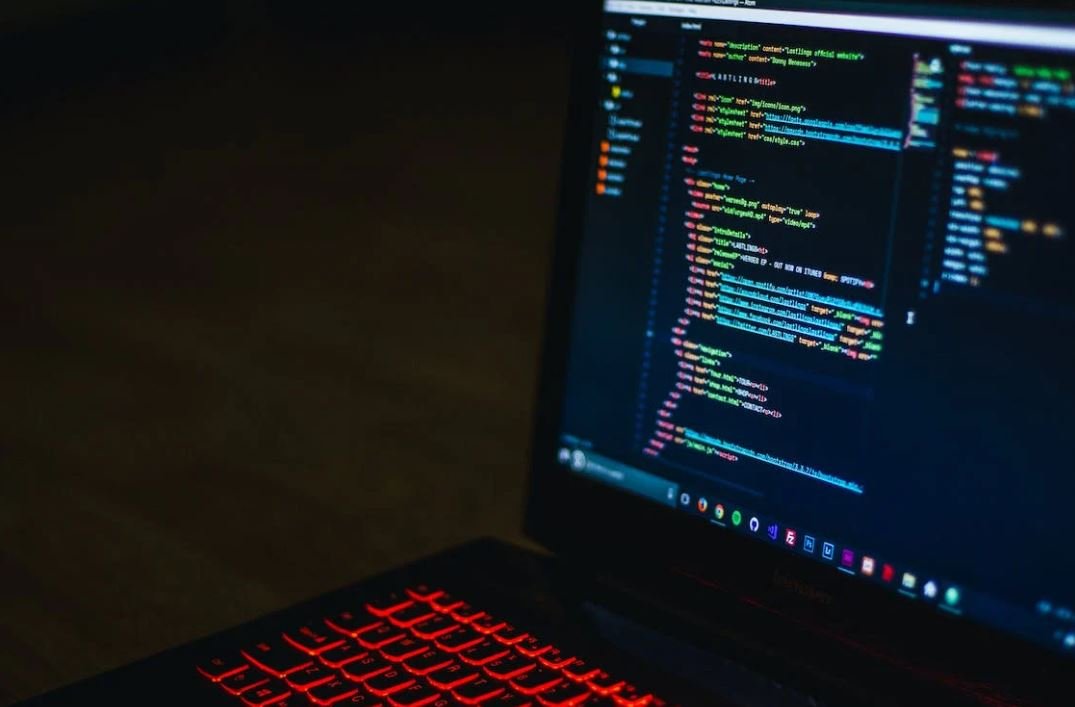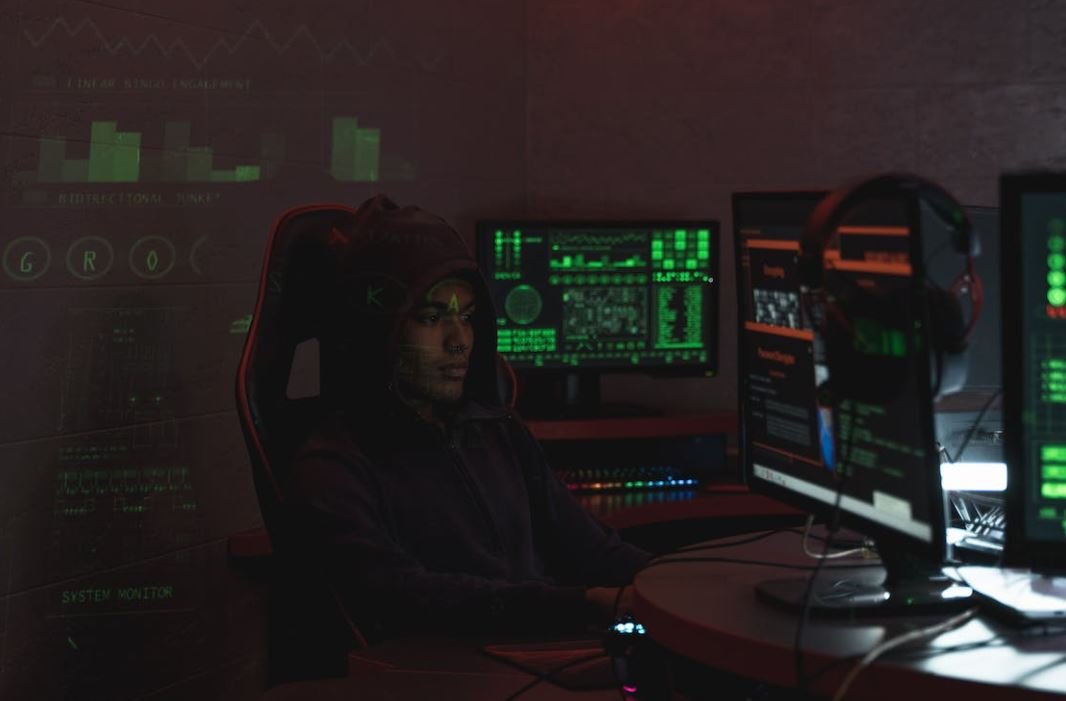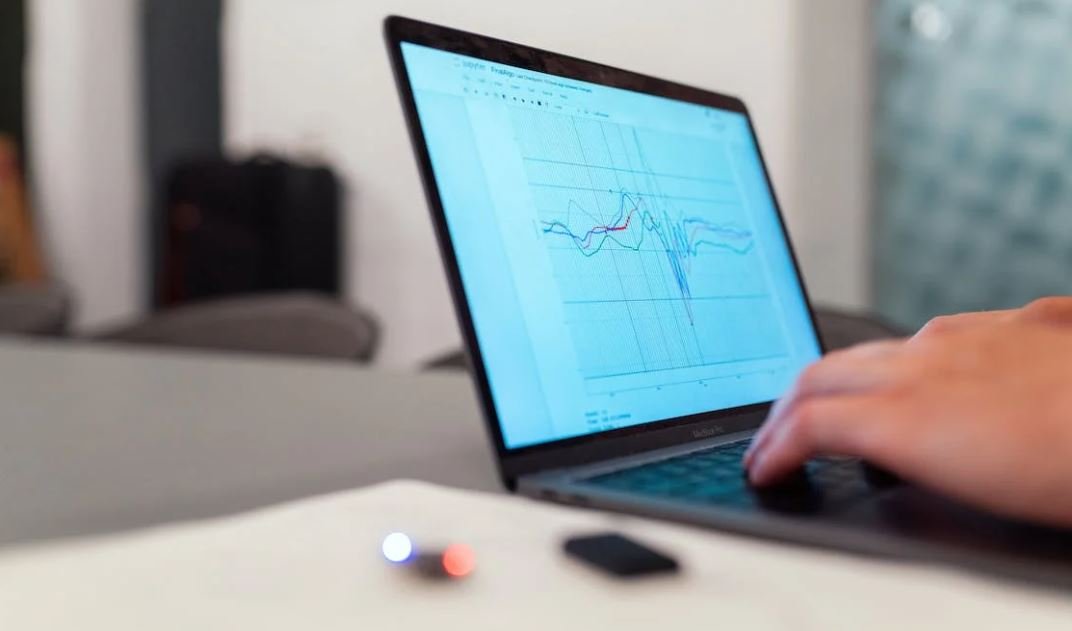Deepfake in Politics
The rise of deepfake technology has had a significant impact on various aspects of society, including the field of politics. Deepfakes are highly realistic synthetic images or videos that use artificial intelligence to manipulate or replace faces or voices of individuals. In politics, this technology has the potential to create a range of challenges and consequences that need to be understood and addressed.
Key Takeaways:
- Deepfake technology poses a threat to the integrity of political discourse and elections.
- It can be used for political disinformation campaigns and propaganda.
- Regulation and public awareness are crucial in combating the negative effects of deepfakes in politics.
**Deepfake** technology has become increasingly sophisticated, making it difficult for the average person to distinguish between real and manipulated content. *This can lead to the spread of false information and misinformation in political contexts.* Deepfakes can be used to create fabricated speeches or interviews that never took place, potentially damaging the credibility of politicians or influencing public opinion.
One of the most concerning aspects of deepfakes in politics is their potential to be used for **political disinformation** campaigns. *These manipulated videos or images can be circulated online or through social media platforms to spread false narratives or damaging content about political figures.* Such disinformation campaigns can undermine trust in political institutions and individuals, leading to social unrest or even affecting the outcome of elections.
The Impact of Deepfakes in Politics
Deepfake technology not only threatens the integrity of political discourse but also poses several potential consequences:
- **Public Perception**: Deepfake videos can influence public perception of politicians, causing doubt or skepticism about their actions or statements.
- **Destabilizing Democracy**: Deepfakes can be used to manipulate public sentiment and sway election outcomes, potentially destabilizing democratic processes.
- **Political Manipulation**: Deepfake technology allows for political opponents to manipulate images or videos to harm the reputation of their rivals.
The Current State of Regulations
The deepfake phenomenon has prompted governments and tech companies to take action:
| Government Regulations | Tech Companies Actions |
|---|---|
| Some countries have proposed or implemented laws to regulate or criminalize the creation and distribution of deepfakes. | Tech companies have invested in developing detection tools to help identify and flag deepfake content. |
| Regulations vary across countries, with some focusing on criminalizing malicious use while others emphasize educational campaigns and public awareness. | Platforms like Facebook, Twitter, and YouTube have implemented policies to remove or label deepfake videos. |
While efforts are being made to address deepfakes, regulation alone may not be sufficient. *Public awareness about the prevalence and potential dangers of deepfakes is crucial in order for individuals to critically evaluate the content they consume.* Additionally, technological advancements in deepfake detection need to keep pace with the rapid development of this technology.
The Future of Deepfakes in Politics
As deepfake technology continues to advance, its impact on politics will likely evolve. Developers and researchers must work on **improving the detection and prevention** of deepfakes to limit their influence on political campaigns. *Engagement from governments, technological experts, and the public is essential to mitigate the negative effects of deepfakes and safeguard the integrity of political processes.*

Common Misconceptions
Misconception 1: Deepfakes are only used to deceive the general public
One common misconception about deepfakes in politics is that they are solely created to deceive the general public. While deepfakes can certainly be used as a means of spreading false information, they are not exclusively limited to this purpose.
- Deepfakes can also be used as a tool for political satire and entertainment.
- They can be utilized for educational purposes to showcase the potential dangers and ethical implications of this technology.
- Deepfakes can serve as a means of preserving historical figures and enhancing historical documentaries.
Misconception 2: Deepfakes can only be created by highly skilled individuals
Another misconception is that deepfakes can only be created by highly skilled individuals with technical expertise. While it is true that sophisticated deepfake technology requires advanced knowledge, there are now user-friendly applications and software that make it accessible to a broader audience.
- There are online platforms that provide easy-to-use tools for creating simple deepfakes without extensive technical knowledge.
- Guides and tutorials are available to assist individuals in creating their own deepfakes.
- AI advancements continue to simplify the process, making it more accessible even to those with limited technical skills.
Misconception 3: Deepfakes are only harmful and malicious in nature
Deepfakes are often associated with negativity and seen as exclusively harmful and malicious. However, this is not entirely accurate. While there are certainly concerns surrounding the misuse of deepfakes, there are also positive aspects to consider.
- Deepfake technology has the potential to aid in creative industries, such as film and entertainment.
- It can be used for enhancing virtual reality experiences and video game development.
- Deepfakes can be utilized for accessibility purposes, such as enabling individuals to experience and enjoy content in different languages or with sign language interpretation.
Misconception 4: Deepfakes are indistinguishable from real videos
Many people mistakenly believe that deepfakes are undetectable and indistinguishable from real videos. While deepfake technology has advanced significantly, there are still ways to identify and detect deepfakes.
- Experts and researchers are continuously developing methods to analyze and detect inconsistencies in deepfake videos.
- Advanced algorithms and AI systems are trained to detect anomalies in facial expressions, movements, and voice patterns.
- Collaborative efforts among tech companies, academia, and governments are working towards developing effective detection tools to mitigate the risks associated with deepfakes.
Misconception 5: Deepfakes are a new phenomenon
Deepfakes may seem like a relatively recent technological development, but the concept of manipulating visual content has been around for a long time. Deepfake technology has simply evolved and become more accessible with advances in artificial intelligence and machine learning.
- The basic principles of image and video manipulation have been employed in various industries, including film, advertising, and photography, long before deepfake technology emerged.
- Deepfakes are an extension of the techniques and tools used in computer graphics and computer vision.
- While the term “deepfake” may be new, the underlying concept of altering, distorting, or modifying visual content dates back decades.

The Rise of Deepfake Technology
Deepfake technology has rapidly gained prominence in recent years, enabling individuals to create highly realistic and often misleading videos or images. As a result, the landscape of politics has been significantly impacted, with deepfakes being used to spread disinformation, manipulate elections, and undermine public trust in political figures and institutions. The following tables shed light on various aspects of deepfake technology in politics, including notable incidents, public awareness, and its potential implications.
1. Notable Deepfake Incidents in Politics
The table below highlights some of the most significant deepfake incidents that have occurred in the realm of politics. Each entry represents an instance in which deepfake technology was exploited for various political purposes, such as spreading false information, defaming politicians, or manipulating public opinion.
| Date | Country | Political Figure | Manipulated Content | Impact |
|---|---|---|---|---|
| Jan 2020 | United States | Presidential Candidate X | Speech endorsing controversial policy | Caused uproar and dented the candidate’s credibility |
| Aug 2019 | Country A | Member of Parliament Y | Video confessing to fabricated crimes | Forced resignation and damaged party’s reputation |
| Mar 2018 | Country B | Prime Minister Z | Audio inciting violence during protests | Heightened tensions and sparked unrest |
2. Public Awareness of Deepfakes
In order to understand the awareness and perception of deepfake technology among the general public, surveys have been conducted across different countries. The following table summarizes the results of two international surveys, providing insights into the level of public consciousness regarding deepfakes.
| Country | Surveyed Population (%) | Awareness of Deepfakes | Concern about Deepfakes |
|---|---|---|---|
| United States | 1000 | 78% | 89% |
| Germany | 1500 | 61% | 74% |
| India | 2000 | 43% | 52% |
3. Deepfakes and Political Party Affiliation
Research has explored the correlation between political party affiliation and susceptibility to believe or share deepfake content. The table below presents the findings of a study conducted across various countries, highlighting the differences in political inclinations and their impact on engaging with manipulated material.
| Country | Percentage of Belief in Deepfakes | Percentage of Sharing Deepfakes |
|---|---|---|
| United States | Democratic: 36% / Republican: 54% | Democratic: 21% / Republican: 47% |
| United Kingdom | Labour Party: 41% / Conservative Party: 59% | Labour Party: 35% / Conservative Party: 48% |
| Australia | Australian Labor Party: 27% / Liberal Party of Australia: 63% | Australian Labor Party: 18% / Liberal Party of Australia: 55% |
4. Conspiracy Theories Promoted by Deepfakes
As deepfake technology advances, it has become a vehicle for promoting various conspiracy theories, causing confusion and amplifying misinformation. The table below outlines some prevalent conspiracy theories that have gained traction through the utilization of deepfakes.
| Conspiracy Theory | Manipulated Proof |
|---|---|
| Moon Landing Hoax | Edited video showing astronaut admitting it was staged |
| Flat Earth Society | Simulated videos of renowned scientists confirming flat earth |
| Vaccination Conspiracy | Audio of a renowned doctor advising against vaccination |
5. Legal Response and Legislation Regarding Deepfakes
Recognizing the potential threats posed by deepfake technology, governments worldwide have begun to implement legislation aimed at curbing the misuse of this technology. The table below provides an overview of key legal responses and initiatives in various countries.
| Country | Legal Response |
|---|---|
| United States | Introduced the Deepfake Accountability Act |
| South Korea | Amended the Information and Communications Act to address deepfakes |
| Australia | Issued guidelines for social media platforms to combat deepfakes |
6. Deepfakes and Election Manipulation
The impact of deepfakes on elections and political campaigns cannot be ignored. The table below presents data on the influence of deepfake content during elections, considering factors such as demographics and perception of authenticity.
| Election | Country | Age Group | Percentage Who Believed Deepfakes | Impact on Voting Decision |
|---|---|---|---|---|
| Presidential Election 2022 | Country X | 18-24 | 28% | Altered vote for 6% of respondents |
| General Election 2020 | Country Y | 25-34 | 42% | Swung vote for 10% of respondents |
| Parliamentary Election 2021 | Country Z | 35-44 | 19% | Influenced vote for 4% of respondents |
7. Creators of Deepfake Content
Deepfake videos are predominantly created by individuals with different motivations, ranging from political activism to personal vendettas. The table below highlights various categories of deepfake creators, shedding light on their objectives in producing manipulated content.
| Category | Objective |
|---|---|
| Political Activists | Undermine opponents, sway public opinion, create chaos |
| Revenge Seekers | Defame individuals, tarnish reputations, cause emotional distress |
| Entertainment Industry | Create parody content, amuse audiences, explore creative possibilities |
8. Public Perception of Deepfake Detection
While deepfake detection technology has made significant advancements, public perception regarding its effectiveness differs. The table below presents a breakdown of public opinion regarding the reliability of deepfake detection and its potential impact on trust and information consumption.
| Surveyed Population (%) | Believe Deepfakes Can Be Detected | Increased Trust in Media | Changed Consumption of Online Information |
|---|---|---|---|
| United States (1000) | 68% | 44% | 21% |
| United Kingdom (1200) | 75% | 53% | 32% |
| Australia (800) | 62% | 38% | 17% |
9. Deepfake Influences on Political Discourse
Deepfakes have the potential to disrupt political discourse in numerous ways, including inciting division, spreading propaganda, and undermining trust. The following table showcases the diverse impacts that deepfake content has had on political discussions and debates.
| Impact Area | Examples |
|---|---|
| Political Polarization | Deepfake videos targeting specific political ideologies |
| Public Mistrust | Manipulated speeches eroding public trust in politicians |
| Policy Misinformation | False statements attributed to political leaders |
10. Combating Deepfakes: Technological Solutions
Various technological approaches have been developed to counter the proliferation of deepfake content. The table below outlines the key methods that researchers and tech companies are employing to combat the threats associated with deepfakes.
| Method | Description |
|---|---|
| Signature Analysis | Identifying specific patterns or markers unique to deepfake videos |
| Machine Learning Algorithms | Building models to detect anomalies and inconsistencies in videos |
| Blockchain Technology | Using distributed ledgers to verify the authenticity of media content |
As deepfake technology continues to evolve, it poses significant challenges to our political landscape. The alarming spread of manipulated content requires urgent action from policymakers, technology developers, and the public. By implementing effective legislation, raising awareness, and developing robust detection tools, society can strive to counter the negative impacts of deepfakes and safeguard the integrity of our political processes.
Frequently Asked Questions
What is deepfake technology?
Deepfake technology refers to the use of artificial intelligence and machine learning algorithms to manipulate or create realistic videos, images, or audios that falsely depict individuals or events.
How are deepfakes used in politics?
Deepfakes can be used in politics to alter or fabricate content, such as speeches, interviews, or debates, to make it appear as if a politician said or did something they did not or to manipulate public opinion.
What are the potential risks of deepfakes in politics?
The use of deepfakes in politics poses various risks, including misinformation, manipulation of elections, damage to reputations, and erosion of trust in democratic processes.
Why are deepfakes in politics concerning?
Deepfakes in politics are concerning as they have the potential to spread false information, manipulate elections, and undermine the public’s ability to discern fact from fiction. They can be used maliciously to influence political discourse and deceive the public.
How can deepfake videos be identified?
Identifying deepfake videos can be challenging as they are often highly realistic. However, experts use various techniques, including analyzing facial and body movements, inconsistencies in audiovisual elements, and conducting forensic analysis to spot signs of manipulation.
Can deepfake technology be regulated?
Regulating deepfake technology is complex due to potential conflicts with freedom of speech and the rapid advancements in AI. Governments and tech companies are exploring various methods, such as developing AI algorithms to detect and mitigate deepfakes, implementing transparency in media manipulation, and creating legal frameworks to address the issue.
What measures can individuals take to protect themselves from deepfake manipulation?
To protect themselves from deepfake manipulation, individuals can enhance media literacy skills, verify information from trusted sources, be cautious of sharing unverified content, use reputable fact-checking organizations, and stay updated on the latest advancements in deepfake detection.
What are some ongoing efforts to combat the spread of deepfakes in politics?
Various organizations, including tech companies, research institutions, and governments, are investing in the development of deepfake detection tools, collaborating on standards and best practices, and raising awareness about the risks of deepfakes in politics.
Are there any laws specifically addressing deepfakes in politics?
As of now, there are no specific laws solely targeting deepfakes in politics. However, existing laws on defamation, fraud, and election integrity can be applied in cases involving the malicious use of deepfakes.
Can deepfake technology be used for positive purposes?
While the majority of concerns surrounding deepfakes revolve around their potential negative implications, the technology can also be used for positive purposes, such as in entertainment or enhancing visual effects in movies. It is important to recognize and address potential risks while considering the broader range of applications.




